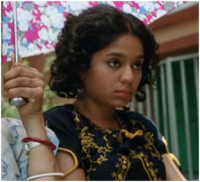Last Updated on July 29, 2022 by themigrationnews
Introduction
The Namesake movie, directed by Mira Nair, is adapted from Jhumpa Lahiri’s 2003 novel, which comes under the genre of drama and Hindi cinema. The film, released in 2006, is currently available to buy or rent on YouTube Movies. The producers of the film are Mira Nair and Lydia Dean Pilcher, with Fox Searchlight Pictures distributing it. Kal Penn, Irfan Khan, and Tabu star in leading roles. The screenplay was done by Sooni Taraporevala with dialogues in Bengali and English. The movie was filmed across India and the United States of America (America). Even though the film is over ten years old, its central idea of identity & belonging is still relevant in today’s world, especially for second-generation immigrants and refugees.
Summary of the Movie
The Namesake tells the story of the Ganguli family, highlighting the struggles of Ashoke (Irfan Khan) and Ashima (Tabu) – first-generation immigrants – and their American-born children, Gogol (Kal Penn) and Sonia (Sahira Nair). The heart of the film lies in the developing relationship between Ashoke and Ashima as a couple and as parents, along with the father and son relationship between Ashoke and Gogol. The film begins with Ashoke and Ashima adapting to their newly married life in New York and the cultural shift. For instance, a comparison between life in India and America is made when Ashoke says, “you can drink water straight from the tap, no need to boil it,” reflecting how water is normally boiled before consumption in India.
Plot Elements
Cultural differences are depicted throughout the film, highlighting how Gogol and Sonia grow up more as Americans than as Bengalis. For instance, Ashima refers to her children as “strangers” when they speak English and states how Gogol is her “American son.” This reflects how despite Ashoke and Ashima being proud of the sacrifices they have made for their children’s future; they believe they have failed to maintain the Indian culture and traditions they grew up with.
Meanwhile, Gogol struggles with figuring out his name, identity, and culture since he constantly questions why his parents named him Gogol. Gogol wants to fit in with his peers, so he ends up growing up in two different worlds. Hence, after graduation, he prefers to stay with his traditionally American girlfriend’s family rather than his own. However, a life-changing event causes Gogol to return home, where he begins to realise the true meaning of his name and identity, finally coming to terms with it.
Although the plot spans around thirty years, the audience stays interested to see how the family deals with various life-changing events. The audience stays hooked until the very end to see how these events impact Gogol’s identity. Subsequently, various creative elements are used throughout the film, of which dialogues, music, and costumes are the most important. Both Bengali and English dialogues are used, which is a significant detail throughout the film. Bengali dialogues are mostly spoken by Ashima and Ashoke, reflecting the more traditional aspects since we hardly see Gogol and Sonia speaking it. In comparison, English dialogues reflect the immigrant life and managing two different worlds.
Creative Elements
The music in the film consistently mirrors the character’s emotions and environment. A variety of music is used to resemble the transition in time from one year to another. For instance, more slow music is used at the beginning of the film to reflect the loneliness Ashima feels in this new country. Contrastingly, more upbeat music is used when they are in India to mirror the busy life, traffic, and people on the streets. Classical Bengali music is heard when the family visits the Taj Mahal, reflecting its historical significance.
Ashima’s costumes remain constant throughout. She is always seen wearing a Sari with a bindi and sindoor (figure 1), reflecting the traditional attire of Indian housewives. In comparison, the children are mostly seen wearing Western clothes. However, Sonia tends to wear more traditional costumes during their visit to India, even though she clearly expresses discomfort (figure 2). This reflects how Sonia is trying to be respectful towards her elders and culture by wearing more traditionally appropriate clothes whilst visiting.

Ashima wearing a sari with a bindi on her forehead and sindoor on the part of her hairline

Sonia wearing a traditional Indian Kurti whilst expressing discomfort.
Analysis of the Topic and its Implementation
This film helps the audience understand the topic of identity and belonging. The topic is explored and mostly understood through Gogol’s perspective and experiences. This is a relevant topic because the film helps the audience understand the struggle second-generation immigrants face in their daily lives. Throughout the film, the audience views these struggles from a first-hand perspective. A significant instance is a change in Ashima’s tone after the birth of Gogol. In this scene, Ashima refers to America as a “lonely country” where she does not want to raise Gogol alone and instead wants to “go home” to India. Ashima speaks in a tone filled with pain and sadness, reflecting the struggle of having to raise a child in a foreign country.
All audiences should watch this film as it highlights the issues immigrants face when migrating to a new country. The ideas depicted in the film also apply to forced migrants and refugees. Everyone from migrant and refugee backgrounds can relate to Ashima when she begins to spell out her surname as “G for Green. A for Apple. N for Nancy…”, and then states, “I have already spelt my name five times.” This scene depicts Ashima’s annoyed tone, reflecting how challenging it is to spell one’s name when it is unheard of in that country. This is quite a relatable scene as it often occurs when booking appointments over the phone. Gogol figuring out his identity is also something that applies to forced migrants and refugees. They constantly struggle with their identity because they want to belong in their host country without forgetting about their roots and country of origin. Forced migrants and refugees significantly relate to these aspects that the film portrays.
Conclusion
In conclusion, Mira Nair depicts an emotional and beautiful film, highlighting the immigrant struggles by displaying traditional Indian culture and the ever-changing western culture of America. The story, dialogue, music, costumes, and the characters portrayed by the cast help provide a deeper understanding of their struggle, which forced migrants and refugees also face. The Namesake depicts a topic that is often under-represented in the popular culture, thus making it a must-watch.

Himani Chauhan is an International Relations & History graduate and is currently pursuing a Masters of Migration Studies from Victoria University of Wellington (New Zealand). She comes from a family of immigrants which has shaped her experiences, views, and interests in wanting to further explore and work in this area of study. Her area of interest includes – Migration, History and Human Rights.
